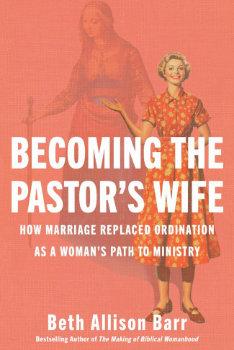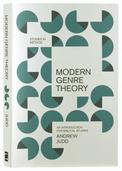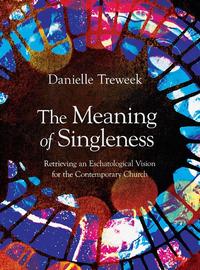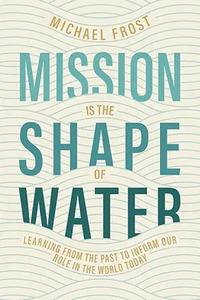Book Reviews
Book Review: Becoming the Pastor’s Wife
- Details
- Written by: Alexandra Phillips
 Becoming the Pastor’s Wife
Becoming the Pastor’s Wife
BETH ALLISON BARR
Brazoz Press, 2025
Reviewed By Alexandra Phillips
Herself a pastor’s wife and historian, Beth Allison Barr challenges the contemporary Southern Baptist Convention (SBC) notion of ‘pastor’s wife’ from within. Her book is a timely, welcome contribution to conversations on the role of women in leadership. Barr questions the wisdom of narrowing the pastor’s wife role to supporting a husband’s ministry, and argues its recent evolution is associated to the decline of female ordination. Whilst offering a leadership opportunity for some women (albeit subordinate), the pastor’s wife role deauthorises women’s independent leadership. Barr persuasively objects to this being considered a biblical role, noting the Bible’s silence on the role performed by wives of ministering husbands, like Peter’s wife. Barr also protests the claim that alternative church leadership roles for women are nonbiblical, pointing to women with authority like Prisca and Junia, whose ministry shows no signs of dependence on a husband in ministry. Likewise, she reveals historical women in church leadership. Barr builds her case compellingly through chapter after chapter of illustrative stories arising from an eclectic mix of history, a survey of ‘pastor’s wives’ literature and her personal experience, inviting the reader’s reactions along the way.
As a historian, Barr complexifies statements about women’s ordination across the ages. She notes its contemporary understanding is a recent development, disagreeing with powerful SBC leaders like Al Mohler (president of the Southern Baptist Theological Seminary). Though Barr’s flow within chapters is occasionally convoluted as she overdoes suspense or draws out her evidence, she ably holds a wide gaze on history by contrasting women’s ministry and ministry titles from different time periods. From the early church-fifth centuries, she uses archaeological evidence to tell of women in church leadership, including performing the eucharist. Next Barr concludes mid-seventh century female superior, Milburga, had a comparable position to a bishop, in her rule over a double monastery (monks and nuns). Then Barr neatly explores how ordination reforms in the 10th-12th centuries linked it to the powerful position of performing the eucharist, requiring a sexually pure unmarried male priest. As medieval priests hardly pursued sexual purity, the result was the debasement of women. Later, though male protestant reformers married, they kept a position of ‘masculine authority’ gained from having an exemplary wife, which led to the origin of the subordinate pastor’s wife position.
Barr then rigorously examines SBC history, demonstrating the influence of particular people, events and resolutions that rapidly and recently turned the tide on the SBC position. Where it previously recognised women’s ministry, both through ordination and just payment, it then defunded churches with female pastors. Barr records Dorothy Patterson’s sway, pushing the complementarian agenda for the white evangelical pastor’s wife, through seminary lessons in which wifely submission was presented as the woman’s highest calling (including training on packing a husband’s suitcase, housekeeping and sex). Far from agreeing that women’s pursuit of church leadership is culturally influenced, Barr suggests capitalism and the 19th century rise in domesticity of women’s work as influential to the SBC notion of the pastor’s wife. As ‘godly woman’ became equivalent to ‘good wife’, she draws the parallel to ‘women in ministry’ becoming ‘wife of a minister.’ Barr clearly establishes links between the growth in submission language in pastor’s wives’ literature and the complementarian Danvers statement (1989), Piper and Grudem’s book Recovering Biblical Manhood and Womanhood (1991) and the ‘submission statement’ (1998) added to the SBC confessional document. She uncovers how the recategorization of ministry workers for tax exemptions led unwittingly to controversy over women’s ministry titles, positions and payment. Thus, as women’s independent path to ministry became more difficult, the pastor’s wife model of service ‘covered the absence of female pastors.’ This resulted in the loss of authority of women’s leadership, and women’s leadership becoming subordinate by definition.
Though Barr regrets the bleakness of the SBC trajectory she uncovers, she closes with stories of hope from church history and the not-too-distant SBC past. She also provocatively suggests that if the white church’s pastors’ wives modelled themselves on the black church for a change, this might lead to a truer opportunity for women to minister with spiritual authority and recognition.
Becoming the Pastor’s Wife is a stimulating read, informing how recent developments have shaped the (widely influential) SBC complementarian concept of the pastor’s wife. This serves as a case study beyond the SBC, and should prompt the church to re-evaluate biblical foundations and historical claims made of the ‘pastor’s wife’ and women in church leadership.
Alexandra grew up in Chile in a missionary family as a pastor's daughter. Since moving to Melbourne, she has studied history, literature, theology and teaching. She is a pastor's wife and mother of two daughters.
7
Book Review: Modern Genre Theory
- Details
- Written by: David Mitchell
 Modern Genre Theory: An Introduction for Biblical Studies
Modern Genre Theory: An Introduction for Biblical Studies
Andrew Judd
Zondervan Academic 2024
Reviewed By David Mitchell
Judges 19 is one of the most confronting stories in the Old Testament. How are we supposed to read it? Is it something of a cautionary tale about the likely outcome for those who commit adultery? Perhaps, like a modern horror film, its designed specifically to make us squirm and shrink away from it. Or, perhaps, it’s better understood as being a piece of wisdom literature with complex truths about life under the sun being conveyed through the narrative. Or, would we be better understanding it as simply another dot point in the decline of the Jewish nation during the period of the judges as they await a king? Or is it some mix of all of things?
How we read a given passage of scripture depends significantly on what genre we assign it. Hence the battle, say, between the literal six-day creationist and the theistic evolutionist, or between the reader who takes Jesus’ parable of the rich man and Lazarus (Luke 16:19–31) as speaking about the actual intermediate state and the person who thinks it does not. On all sides of such debates, people can agree on the authority of the Scriptures and yet be at odds as to what the scripture in question is authoritatively teaching.
Book Review: The Meaning of Singleness
- Details
- Written by: Denise Nicholls
 The Meaning of Singleness
The Meaning of Singleness
Danielle Treweek
Ivp Academic 2023
Reviewed by Denise Nicholls
This is a great book! A must read for ministers of the gospel whether engaged, married, single or single again. I say this because so many ministers (myself included) have often longed for and prayed for young families to come to their churches as THIS will see a renewal of our Churches. Further we can either neglect or pay lip service to the Church as THE family of God, when we concentrate our efforts upon the nuclear family as the mainstay and structure of our Churches. Danielle Treweek’s 2024 Australian Book of the Year is a sober reminder of the place of the important and often neglected place of the single Christian disciple in the life of the Church.
Through thorough research on the various positions of single believers since the inception of the Christian Church, to the Patristics, the middle and late medieval church to the present day, Treweek provides us with a very readable book in ten chapters and four parts, navigating the Context, Diagnosis, Theological ‘retrieval’ and finally her own thoughts on the Meaning of Singleness for the evangelical church today.
Book Review: Bridging the Testaments
- Details
- Written by: Dale Appleby
Bridging the Testaments: The history and theology of God’s people in the Second Temple Period
George Athas
Grand Rapids: Zondervan Academic. 2023
Reviewed By Dale Appleby
George Athas is senior lecturer in Hebrew, Old Testament, and early church history at Moore College. A difficulty in being a teacher is not knowing things. Worse is not knowing that we don’t know. Bridging the Testaments is a great help for those of us whose knowledge of the period between Malachi and Matthew is best represented by the two blank pages between those books in our Bibles. However, Athas begins with a different question: did prophecy cease during that period? Was there any prophetic activity between Malachi and Herod? In answering this he provides a thorough (re)construction of both the history and the prophetic activity of the people of Judah and Samaria in the period between the return from exile and the birth of Christ.
The book is in four parts: The Persian Era; The Hellenistic Era; the Hasmonean Era; The Roman Era. As well there are eleven Tables of Rulers, High Priests, and others, lots of maps and many family tree diagrams. The writing is leisurely and easy to read. Athas seems happy to take time to explain things rather than skimming over the details. The book is interesting not tedious.
His argument is that there was a lot of prophetic activity in this period and that it had a lot to do with the status of Jerusalem over against Mount Gerizim, and the status of the Davidic line over against the priesthood. Mount Gerizim and Samaria had various advantages of population and wealth. Jerusalem was the seat of the Davidic monarchy which had less and less power as time went on. Thus the prophetic activity was focused on Jerusalem and David’s line in order to help the people of both north and south focus on Jerusalem as the centre of national life and hope. The prophetic line was that “Yahweh had himself entered the Davidic dynasty as its father figure and that he ruled the nation through his son, the Davidic heir, as stipulated in the canon of the Prophets.” (p18). So the redefinition of the “kingdom of God” as a “kingdom of priests” and the development of the priesthood as the central power of the nation (especially if centred on Mount Gerizim) raised serious questions about the promises of God and his purposes. The way this developed kept changing as different world powers had influence in Judah and Samaria. One of the great strengths of this book is the clear and detailed description of the great powers and their influence on the life of the people of God.
This relates to one of the main theological arguments, that of late theological development. The progressive revelation of God and his purposes continued because God pursued a relationship with his covenant people. He did not go silent for 450 years. Athas says, “We should, therefore, expect theological developments to have occurred, but it is important to understand the contexts in which it occurred so that it might be understood correctly.” (p13).
The book takes a bold approach to dating and to contextualising such matters as the Book of the Twelve Prophets, some of the well-known difficult passages such as the final chapters of Zechariah and the visions of Daniel that relate to Greece and so on. (They were up to date prophetic applications of earlier prophecies applicable to the current context). Athas gives excellent foot-note references (there is no Bibliography as such) to support his decisions and to reference other voices in the discussions.
Overall this is a terrific book. It is a great combination of well written history and a theological path to understanding both the books of the canon and the extra-biblical writings such as Maccabees and Josephus in their historical context. It is a book that as a local church minister I would have liked to have had from the beginning.
Dale has retired at least three times after ministries in Perth, Darwin and Jakarta. He is a member of St Mark’s Bassendean WA.
Book Review: Mission is the Shape of Water
- Details
- Written by: Andrew Esnouf
 Mission is the Shape of Water
Mission is the Shape of Water
Michael Frost
100 Movements
Reviewed by Rev. Andrew Esnouf
Michael Frost has been a leading Australian voice on the theology and practice of mission in contemporary Western society for several decades and has authored numerous books on these topics. Despite this long list of publications, Mission is the Shape of Water displays a unique approach amongst his corpus of work. Frost’s recent books such as Surprise the World and Keep Christianity Weird have focussed on ways individual Christians can participate in God’s mission through everyday habits and individual flair. ‘Mission is the Shape of Water’ is distinct from these books in that it takes a wider approach, drawing upon Christian history to encourage and equip contemporary Christians in their missional endeavours.
Frost unpacks the title’s opaque imagery in the prologue. Firstly, water’s fluid nature means that it always takes the shape of whatever contains it. In a water bottle it takes the shape of a water bottle, in a bucket it takes the form of a bucket. Like water, Frost suggests, mission’s shape at a particular time and place is always determined by its context. Secondly, taking inspiration from the 2019-2020 pro-democracy protesters in Hong Kong use of the phrase “Be water!” to describe their agile and mobile protest tactics, which could at times combine into an unstoppable force. Coordinated protesters – just like water – are able to move swiftly in some contexts, to pool together into a large immovable contingent and then effortlessly disperse in some contexts, and to move forcefully together as a single force in other contexts. Mission is like water in that it is always contextually attuned to the immediate situation, and is best when a coordinated and responsive movement.
The core of the book are the ten chapters, each describing a different “shape” that water has taken throughout the history of the church, and offering some thoughts on how this shape may look in our current world. These shapes are: God slaying, peacemaking, flame bearing, spirit seeking, wordsmithing, freedom fighting, unshackling, contextualising, remissioning and unearthing. Each of these shapes arose in different contexts and functioned in different ways, and Frost presents them not as an essentialised list of permissible or essential ways to be missional, but as a smorgasbord of approaches, some of which are in tension with each other – sometimes uncomfortably. For instance, in “Spirit Seeking” shape, Frost commends the early modern Moravian missionaries for, among other things, “overlooking seemingly intractable social issues” such as polygamy and slavery in order to call people to salvation. This is in tension with the ‘Freedom Fighting’ shape of mission, in which Christians make resisting such intractable social issues as slavery and other brutalities the core of their missional endeavours. Frost is not contradictory in this, but rather is explicit that differing situations call for diverse approaches to mission.
There are further shortcomings of this book one should be aware of. Firstly, whilst this book includes many historical anecdotes, it should not be mistaken for a work of historical scholarship. Secondly, there is very little articulation of a theology or motivation for Christians or churches to be missional. Finally, there is only sparse advice for readers on how to discern the needs of their current context, and how to shape missional faithfully and effectively in their context. If the reader is seeking edification on any of these three topics, they are best to look elsewhere.
Ultimately, this book isn't perfect, and it isn’t a one-stop-shop for grounding the reader in all aspects of missional thinking and practice. And it does not claim to be. It is, however, an accessible and enjoyable jaunt through Christian history in the search for historical practices of mission that inspire and expand the imagination of the contemporary church.
Andrew Esnouf is Parish Minister (Youth) at St A's Merri-Bek in the Diocese of Melbourne
